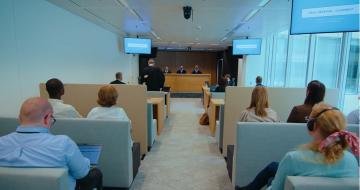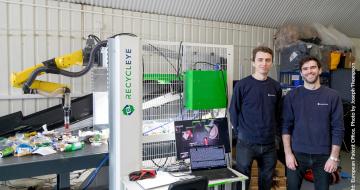To be protected by a patent, an invention must be
- new,
- inventive
- susceptible of industrial application and
- lawful.
The notion of invention
Above all, it must be a genuine invention. There is no legal definition of an invention. However, an invention is generally defined by the fact that it must be of a technical nature, which means that it provides a technical solution to a technical problem or that it makes a technical contribution to the state of the art.
As a result, the following elements are not, as such, considered as inventions:
- discoveries, scientific theories or mathematical methods. However, these may form the basis for patentable inventions. For example, Einstein's theory of relativity is not patentable in itself, but the techniques of GPS that apply this theory are;
- aesthetic creations or information presentations. On the other hand, these creations may be protected by copyright or design rights;
- schemes, rules and methods for performing mental acts, playing games or doing business (so-called business methods). For example, an architect's accounting methods or plans are not patentable;
- computer programs. Only if the computer program has a specific technical effect or if, in combination with equipment, it meets the other conditions for patentability, can it possibly be protected by a patent. An invention implemented by a computer program that provides a technical solution to a technical problem is therefore likely to be protected by a patent.
Software that uses less data in the computer's memory could, for example, be an "invention". Computer programs, on the other hand, are protectable as such by copyright.
Discoveries, theories, software, aesthetic creations, information presentations, business methods, etc. are only excluded from patentability only to the extent to which the patent application relates to such subject-matter or activities as such. This means that the incorporation of these elements into a product, process or result by which a technical solution is provided for a technical problem, may give rise to a patent. This would be the case, for example, for medical scanners that are operated by specific software.
Plant or animal varieties, or essentially biological processes for the production of plants or animals, and plants or animals exclusively obtained by these processes, as well as the human body at the various stages of its constitution and development, or the simple discovery of an element of the human body (e.g. a genetic sequence), are excluded from the scope of patentability. However, a patent application may be possible if the application of the invention is not limited to a specific plant or animal variety. Similarly, a microbiological invention or part of the human body, such as a genetic sequence, may be patented if it has been isolated or produced by a technical process outside the human body. On condition, of course, that the conditions for patentability are met.
Find out more about biotechnology inventions and patents.
Methods of surgical or therapeutic treatment of the human body or animals, and diagnostic methods, are also expressly excluded from the scope of patentability.
Novelty
An invention must be new in order to be protected by a patent. An invention is considered new if it is not included in the state of the art. The state of the art consists of everything that has been made available to the public before the filing date of the patent application by a written or oral description, use or any other means. This may be, for example, the commercialisation of the invention, press conferences, press articles, publications or public exhibitions.
The content of patent applications, even unpublished, is part of the state of the art in the country for which the patent is applied for. In such cases, an invention not yet known to the public may be part of the state of the art and invalidate a subsequently filed patent application.
When assessing the condition of novelty, it should be taken into account that persons who have filed a patent application abroad have a 12-month priority right to subsequently file a patent application for the same invention in Belgium. This priority rightis an international standard recognised in all countries (more than 175) which are signatories to the Paris Convention.
It is therefore essential to keep your invention secret before filing a patent application. Caution must be exercised regarding both the conditions of access to the relevant company and to the sites where the invention is developed. It is also recommended to have confidentiality clauses included in contracts with industrial or commercial partners. If an invention is made public in violation of such confidentiality clauses, and, for example, as a result of a break-in, the holder of the patent right still has 6 months to file his patent application.
Please note: the invention must be explained in the patent application in a sufficiently clear and complete manner for a professional to be able to carry it out. An adequate explanation of the invention is an essential condition for obtaining patent protection, but this description of the invention is only made in the patent application itself, so that the invention is not disclosed until after the patent application has been filed.
Inventive step
An invention shall be considered as involving an inventive step if, having regard to the state of the art, it is not obvious to a person skilled in the art, i.e. when it is not obvious to a specialist. This inventive step is assessed on a case-by-case basis, taking into account all the circumstances. The inventor does not need to be a genius, and the invention does not need to be complex. A simple solution to a problem that has remained unsolved for many years can imply an inventive step.
Industrial application
An invention must be industrially applicable, which implies that it must be possible to manufacture it or use it in any kind of industry, business or agriculture. The term "industry" must be understood in the broad sense, including the exercise of any activity of a technical nature, i.e. an activity that falls within the field of the mechanical arts as opposed to the fine arts.
An invention, as a technical solution to a technical problem, will in principle meet this requirement for industrial application. However, this condition is not met by scientific discoveries or concepts, which are not in any case inventions.
Legality of the invention
Inventions for which the commercial exploitation would be contrary to public order or morality are not patentable. This generally refers to incitement to acts likely to disturb public order or criminal acts or propaganda for racial or religious discrimination and manifest obscenity. This also covers inventions for which their application would cause significant damage to the environment or harm the life or health of humans, plants or animals. However, the fact that the application of the invention is contrary to a legal or regulatory provision does not prevent its patentability, nor does it prevent it from being used by illegal means.
For this reason, an invention that could only be applied for chemical weapons purposes, or an invention pertaining to the cloning of human beings, is not patentable.
In particular, the legislator has excluded a range of inventions in the field of biotechnology from being patentable:
- processes for cloning human beings, i.e. any process, including embryo splitting techniques, aimed at creating a human being with the same nuclear genetic information as another living or deceased human being;
- processes for modifying the germ line genetic identity of human beings;
- the use of human embryos for industrial or commercial purposes;
- processes for modifying the genetic identity of animals which are likely to cause them suffering without substantial medical benefit to humans or animals, and also animals resulting from such processes.
The fact that such biotechnological inventions are excluded from patentability does not mean, however, that all inventions in this field are not patentable.


